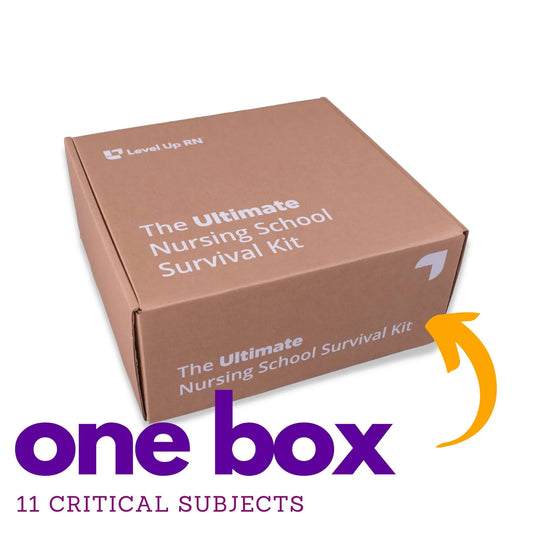If you've been following Level Up RN for any amount of time, whether it's studying our flashcards, reading our articles, or of course—watching our videos, you've probably seen this little guy: 
What's his deal? Where did he come from? Why is he so cute? Furthermore, what makes him so cool?
Nursing school is hard
When Cathy Parkes BSN, RN, CWCN, PHN, founder of Level Up RN, was in nursing school, she worked hard to master the material presented in each of her classes, and to pass the ATI and NCLEX exams. There's a LOT of information to remember in nursing school, and some of it's pretty overwhelming at first blush. Pharm students are expected to learn hundreds of drugs, from Apixaban to Zafirlukast—and keep them all straight?! First of all, you'd swear some of those are actually the name of a Pokemon. Second of all, some of these terms don't follow standard medical terminology patterns where their meanings can be deduced from the parts of the word. Finally, it's a massive amount of information to remember over the relatively short period of time students are in nursing school. That's where memory devices like mnemonics come in.
Mnemonics to the rescue
A mnemonic is a device such as a pattern of letters, ideas, or associations that assists in remembering something. The famous Roy G. Biv helps us remember that the colors of the rainbow are red, orange, yellow, green, blue, indigo, violet.
When Cathy was studying pharmacology, she found mnemonic devices to be particularly helpful. When you're taking a nursing school exam, you might not be able to instantly remember that headaches are a side effect of isosorbide mononitrate, but you might be able to remember that headaches (brain freeze) can be a side effect of eating some icy sorbet, which sounds like isosorbide.
Mnemonics work when they are easier to remember than the thing you're trying to remember. This can be because of a connection between the letters (Roy G. Biv), the sounds of words (isosorbide), a jingle (what's Pepto-Bismol for? ♫Heartburn, nausea, indigestion, upset stomach, diarrhea♫), related concepts or ideas, or just because they're weird.
Colchicine and the origin of the Cool Chicken
Colchicine is a medication used to decrease pain and inflammation in an acute gout attack. It is in a class of medications known as anti-gout agents. When Cathy was creating a mnemonic for colchicine, she came up with, “Hey man, cool chicken. OUCH! That chicken just pecked my gouty toe,” to remember that colchicine is used for an acute gout attack.
Why does it work?
- Word association: Colchicine sounds like cool chicken. Col- is similar to cool, and -chicine is similar to chicken!
- Idea association: A chicken pecking anyone's toe would probably hurt, but it would hurt even more if you had gout, which causes joint pain and swelling, particularly around the big toe. A chicken pecking your toe is probably not happening chronically, which means it's an acute attack.
- It's weird: The American Psychological Association defines the bizarreness effect as the finding that people tend to have a superior memory for offbeat images or sentences as compared to common images or sentences.

A fan-favorite mnemonic
When Cathy began sharing her nursing school tips with the world, she shared the mnemonics she'd used too. Students who learned from Cathy reported back that the Colchicine/Cool Chicken mnemonic was particularly helpful for them—What's colchicine for? Oh yeah...something about a chicken...Hey man, cool chicken. OUCH! That chicken just pecked my gouty toe. Oh yeah! Colchicine is for an acute gout attack!
A "Cool Chicken hint" thus began to represent any of Level Up RN's silly mnemonics. Eventually, we put a super cute face to the name and began using him as a visual symbol to indicate mnemonic hints on our flashcards.


